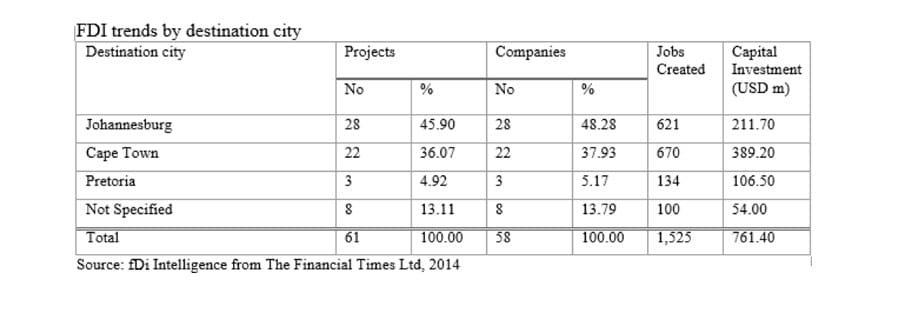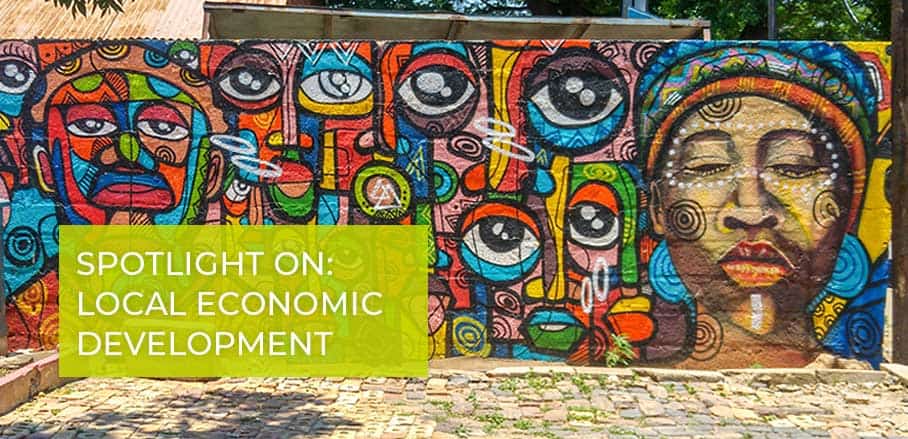Creative Industries in South Africa: An Engine for Urban Regeneration
The concept of “creative cities” enjoys widespread popularity. Oluwayemisi Adebola Oyekunle explains how the creative industries are contributing to urban revitalisation in South Africa.
South African urban areas are in trouble due to societal challenges such as rapid population growth, poverty, badly maintained roads, traffic congestion, poor public transport, drug abuse, unemployment, pollution, and service delivery protests.
In the past two decades, the role of creative industries in economic regeneration, job creation, and urban development has been a point of debate. The creative industries can be a medium for the government to reposition South Africa in the global economy. By helping to build the competitive efforts of creative goods and services, and by promoting creativity and innovation together with the industry, government policies can enhance sustainable development, social inclusion, and job creation.
Essentially, creative industries can perform an important role in the future development of urban areas. The development of creative industries, e.g. visual and performing arts, museums, music, and fashion, accelerates the urban economy and creates new pathways of economic development.
Creative Cities Require a Focus on Urban Regeneration
Around the world, an increasing number of cities are using the idea of “creative cities” in urban development strategies that are designed to improve growth through cultural and creative activities. The central tenet of the idea is that a city’s most important resource is its people with their desires, inventiveness, and motivation. The creativity of the people within a community and their ability to run cities sustainability will determine the city’s overall future success. The concept of the “creative city” is multimodal and can originate from any citizen through any sector or profession.
The creative city consists of a creative bureaucracy, creative individuals, creative communities, creative schools and universities, creative organisations, and so forth. As a result, broadly speaking, the increased promotion of creativity is the key to urban regeneration strategies.
The heritage and arts sectors form a main pillar in the regeneration of the cities of Johannesburg and Cape Town. The two cities are the key national centers for music, crafts, performing arts, design, and visual arts. The City of Johannesburg is the most well developed creative economy in South Africa and home to the highest number of creative enterprises in the country. The City of Cape Town is aiming to become a global city in order to increase its competitiveness on the international stage. The creative industries sector in Johannesburg controls the national profile and the sub-sectors that control the local landscape are the performing arts, music, film, and visual arts.
Most of the support, promotion and facilitation for the development of the creative industries, especially in Johannesburg and Cape Town, are part of the government’s efforts to preserve, develop, promote, and identify heritage resources. As potential future creative mega-cities, Johannesburg and Cape Town need specific policies and strategic measures to support and further develop their creative industries, and to create spillovers for sustainable development in other cities.
The Role of Creative Industries for Local Economies
For the past two decades, South Africa’s creative industries have been identified as the main drivers of personal wealth, tourism, foreign investment, and employment. They have also contributed significantly to urban renewal. The creative development in both Johannesburg and Cape Town show community development, wealth creation, and job creation as key profits that can develop from creative industry approaches for the urban economy. Physical urban regeneration projects that adapt creative industries are money-spinning in many ways, not only for economic development but also to enhance a city’s image and reputation.
The inflow of Foreign and Direct Investment (FDI) projects into South Africa has contributed to the diversification of the urban economy. There is indication that FDI has the prospect to contribute to growth by supplementing domestic investment, and allocates skills for urban regeneration. Consequently, for the country to realise its full potential, it is essential to work hard on its infrastructure, foreign investment policy framework, and the costs of doing business to facilitate foreign investment (Oyekunle, 2017).
The creative industries contribute to the achievement of the Sustainable Development Goals (SDGs). For example: community involvement in creative activities; regional integration and poverty alleviation across Africa; urban regeneration, especially in previously disadvantaged areas; and projects such as indigenous music, fashion weeks, craft markets/festivals and FDI projects.
FDI in creative industries represents major potential for South African urban development. Out of a total of three destination cities for FDI, Johannesburg is the top destination city, accounting for almost half of projects tracked (Oyekunle, 2017). Cape Town has received the highest total number of jobs (670) and greatest investment (USD 389.20 million) (Oyekunle, 2017). Pretoria has the largest project size on average in terms of both investment and job creation.

The Right Policy Measures Can Ameliorate Urban Regeneration and Ensure Social Securities
Developing an appropriate policy approach can help improve urban regeneration by guaranteeing social securities, such as job creation and sustainable livelihood, basic infrastructure development, social inclusion, and the general promotion of the arts, culture, traditions, and heritage.
Sustainable urban regeneration can continually help to promote the business environment, so that innovative firms can attract and retain a creative, educated, and entrepreneurial workforce. The following aspects are indispensable for Creative Cities:
- Celebrate the city’s rich culture and diversity for inclusive growth,
- Increase the city’s cultural assets,
- Capitalise on opportunities to support economic growth and sustainability through creative goods and services,
- Support relevant arts and culture businesses,
- Promote urban regeneration through public arts, monuments, and the preservation of cultural and historical infrastructures,
- Preserve the tangible and intangible heritage.
- Creative Industries in South Africa: An Engine for Urban Regeneration - 5. February 2019
